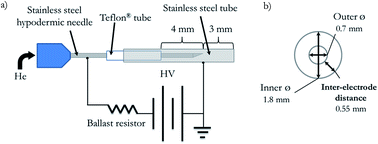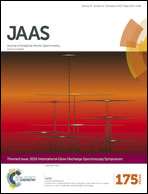Plasma regime transition in a needle-FAPA desorption/ionization source
Abstract
The development of new Ambient Desorption/Ionization (ADI) sources has been an important research topic in recent years, arising from the need for reducing cost, analysis time and equipment complexity using mass spectrometry detection. This work presents a miniaturized plasma device with ADI capabilities based on a concentric FAPA source. The discharge device, the “needle-Flowing Atmospheric Pressure Afterglow” (n-FAPA), has been developed with easily replaceable commercial parts. In particular, the discharge is generated in flowing He using two concentric electrodes: a stainless steel capillary tube acting as the anode (outer electrode), and a hypodermic needle with a bevel-cut edge (inner electrode) acting as the cathode. Electrical and optical studies of n-FAPA have been carried out and the existence of a plasma regime transition (e.g. between normal glow and glow-to-arc transition), depending on the gas flow and current intensity conditions, has been shown. Rotational temperature and spatial distribution of temperatures have been calculated for both plasma regimes. Finally, the n-FAPA desorption/ionization source, coupled to a quadrupole mass spectrometer, has been tested in both plasma regimes for direct analysis of caffeine. Additionally, commercial drinks, carboxylic acids in water, and olive oil have been tested as model analytes.

- This article is part of the themed collection: Glow Discharge Spectroscopy


 Please wait while we load your content...
Please wait while we load your content...